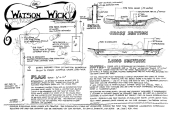I would be careful with your use of this system.
The “mechanical stabilization” resolves lateral sheer forces into vertical forces that don’t push the sand in your wall apart.
The earth surrounding your house has not been mechanically stabilized so it will push inward on your walls. Your walls will have very little resistance to this lateral force and will cave in.
If you hope to succeed with a system like this, the earth in the area surrounding your house will also need to be mechanically stabilized. Perhaps it could be removed and replaced in layers with the mechanical stabilization extending out into the surrounding area. How far this will need to happen will depend on the angle of repose of surrounding soils.
For x ample with a one story house, you MIGHT need to remove 15 feet of dirt to the level of your floor and replace it in compacted 1 foot layers with sheer fabric between each layer. I made that up, but if sandy, perhaps more; if hard dirt, perhaps less. If fairly solid rock, perhaps not much at all.
Also, realize that the wall will have to retain or devote any water that passes through the soil.



